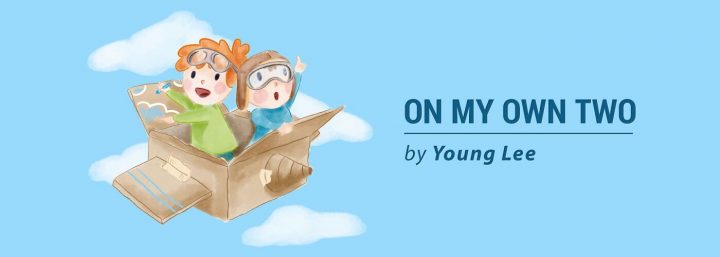I’m Coming Out of My CMT Closet to Talk About My Disease
Written by |

Column by Young Lee
I remember being a moody preteen and exasperating my tennis instructor. He was convinced that I wasn’t trying. I was slow to react and sluggish on the court. I didn’t seem to be giving it my all.
And, to be fair, he was right. I know I could have given more on the court, and I regret not doing so. But I was scared of reaching the limits of my speed and didn’t want to risk falling on my face. And though I wasn’t overly afraid of falling, I feared the awkwardness of revealing the degree of my limitations.
But looking back, this was a silly sentiment.
The lessons were one-on-one. I wasn’t there to try to impress anyone. My goals were to learn the basics of tennis and get some exercise. Maybe it would have been less stressful for both of us if I had been more open in my communication — if he had known about my goals, limitations, and Charcot-Marie-Tooth disease (CMT).
I don’t know why this memory came to mind recently. Perhaps it was because I was thinking about Jonah Berger’s book, “He Walks Like a Cowboy,” and his discussion of the archetypical idea of masculinity and how it relates to a disease like CMT.
Or maybe it was because Pride Month was ending and “coming out of the closet” was on my mind. Though I’m a straight, cisgender guy, I agree with the sentiment that we all have our “closets.”
In an interview on NPR’s “TED Radio Hour,” LGBTQIA+ activist Ash Beckham spoke about the different kinds of closets that we have. “Your closet may be telling someone you love her for the first time or telling someone that you’re pregnant or telling someone you have cancer or any of the other hard conversations we have throughout our lives. All a closet is is a hard conversation. And although our topics may vary tremendously, the experience of being in and coming out of the closet is universal.”
Maybe my “closet” includes discussing CMT with acquaintances, and not just with close friends and family members.
I had dismissed the idea of being proactive about talking about CMT for most of my life. I believed that the onus was on “the majority” to learn to be more accepting and knowledgeable, rather than on me, a member of a disabled community, to communicate and educate.
However, other members of the CMT community such as Berger, who is a member of the CMTA Advisory Board, have convinced me otherwise.
In his book, Berger writes about the matter-of-fact curious attitude that most kids show toward his ankle-foot orthoses. Kids often ask him questions about them and when he answers, they continue on their merry way, satisfied and no longer wary of the braces.
“Human beings are curious creatures, we have a natural curiosity in regards to things we don’t understand,” Berger said in a CMTA webinar. “That is natural. That is beautiful. And that is great.”
However, Berger believes that as we get older, we become reluctant to ask questions of others, which he says is detrimental for society.
“The reason we have developed so much fear of each other in this world is that we don’t understand each other,” Berger said during his webinar. “We just don’t understand each other, whether it’s race, whether it’s religion, whether it’s culture, whether it’s disability. …
“We can turn that culture mistake around by taking the lead in that. We have things about us that make us aware in ways that people with relatively normal bodies, or typical bodies, don’t understand. So, it’s on us, in my opinion, it’s our responsibility to use this disability to teach, to educate, to break down those walls that absolutely need to be broken down.”
Perhaps Berger is right. Maybe in many instances, the onus is on us, the CMT community, to affect change — to come out of our “closet” and to talk about CMT. After all, it is “the biggest disease people have never heard of.”
***
Note: Charcot-Marie-Tooth News is strictly a news and information website about the disease. It does not provide medical advice, diagnosis, or treatment. This content is not intended to be a substitute for professional medical advice, diagnosis, or treatment. Always seek the advice of your physician or other qualified health provider with any questions you may have regarding a medical condition. Never disregard professional medical advice or delay in seeking it because of something you have read on this website. The opinions expressed in this column are not those of Charcot-Marie-Tooth News or its parent company, Bionews Services, and are intended to spark discussion about issues pertaining to Charcot-Marie-Tooth.





Leave a comment
Fill in the required fields to post. Your email address will not be published.